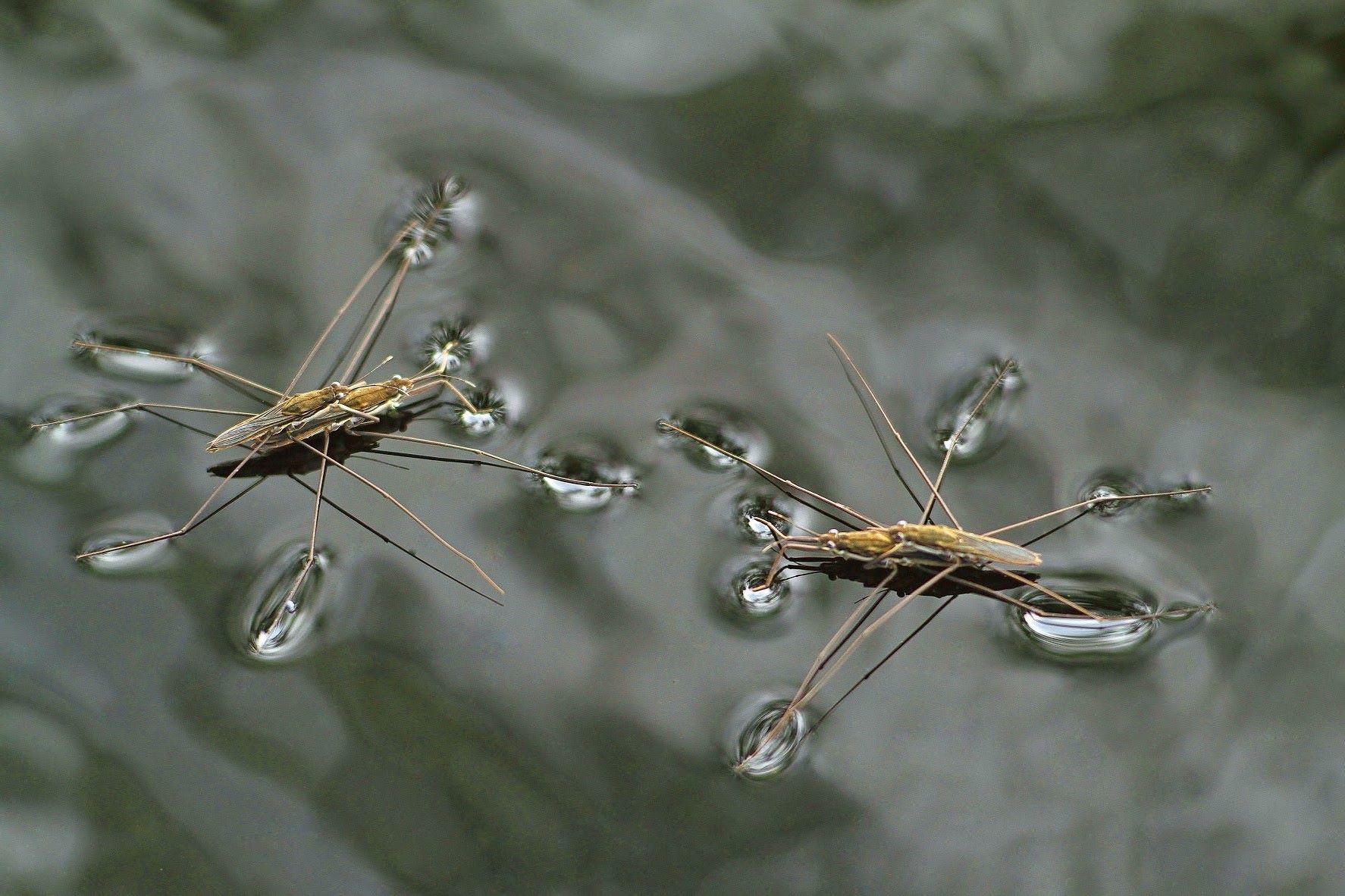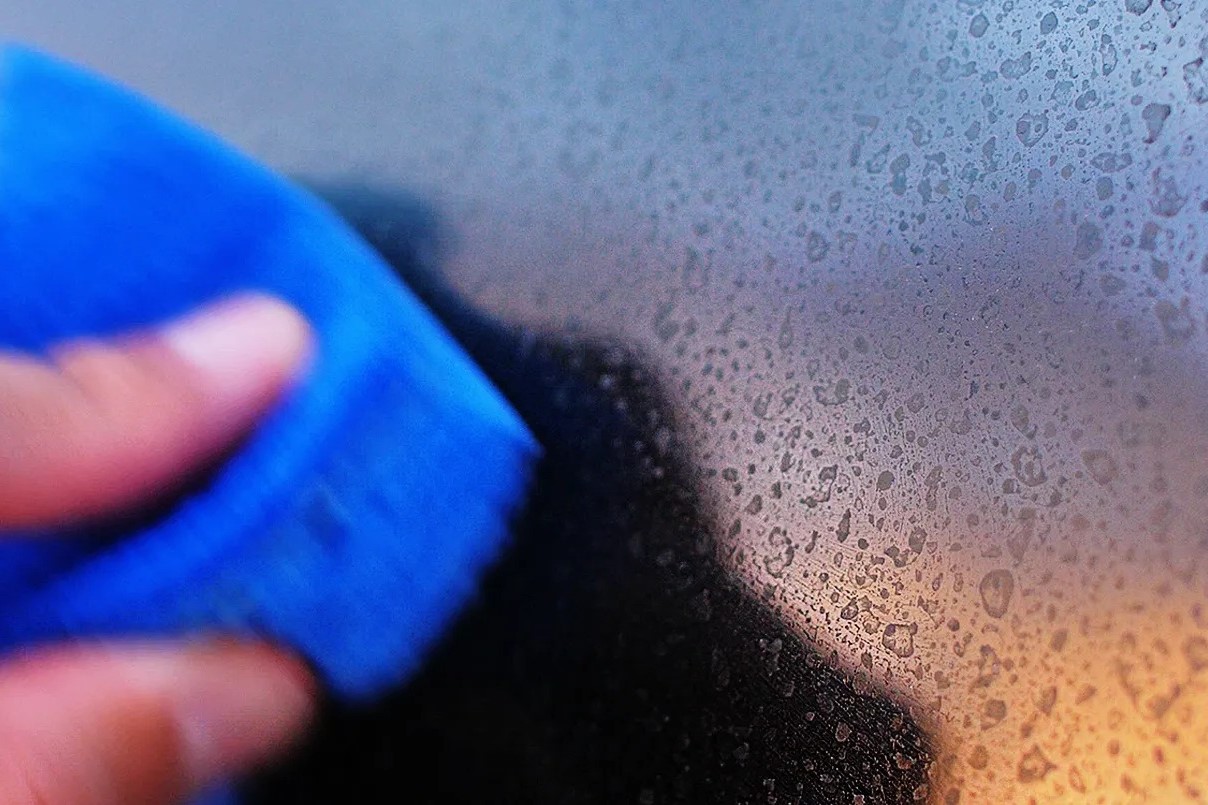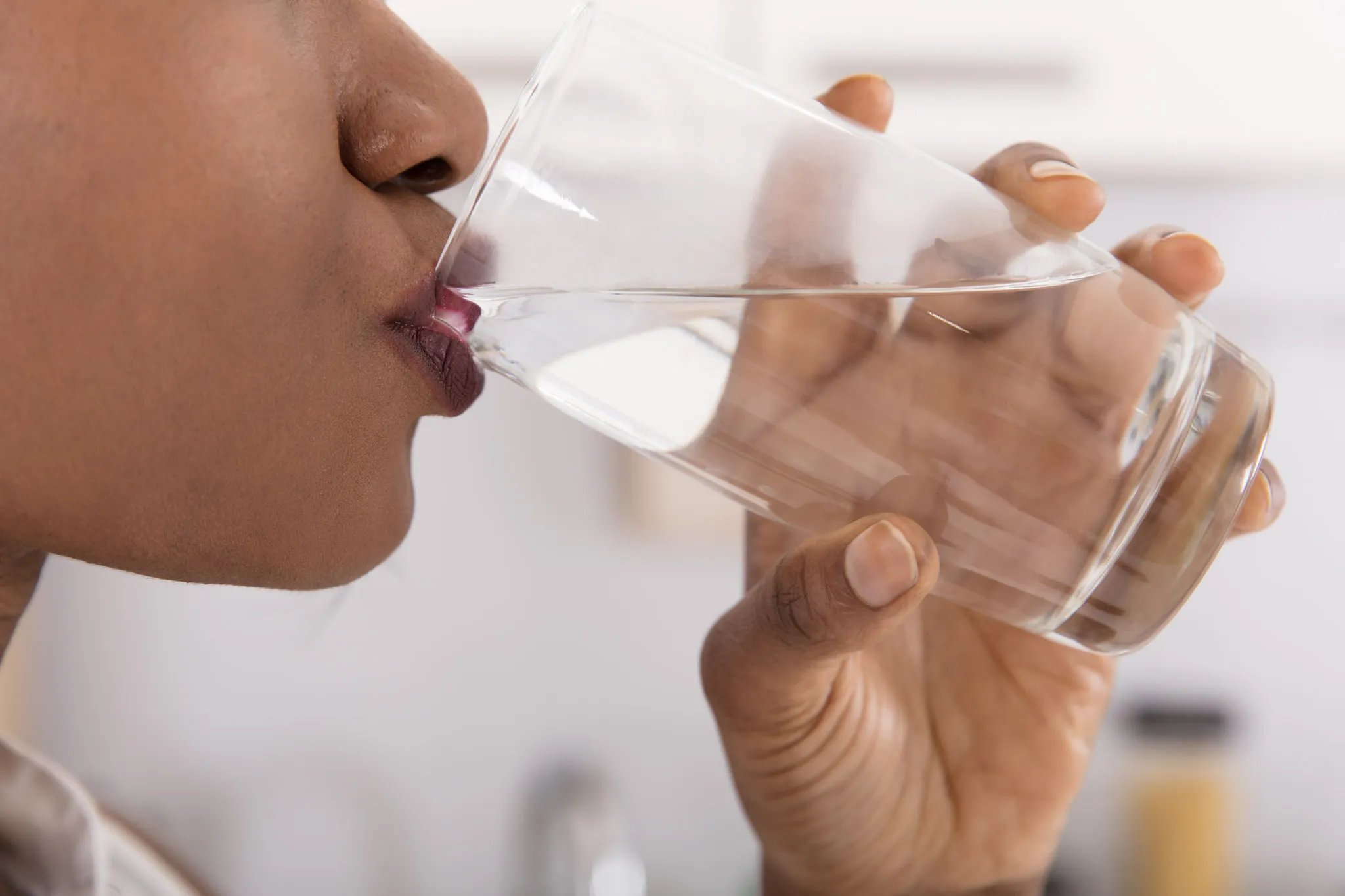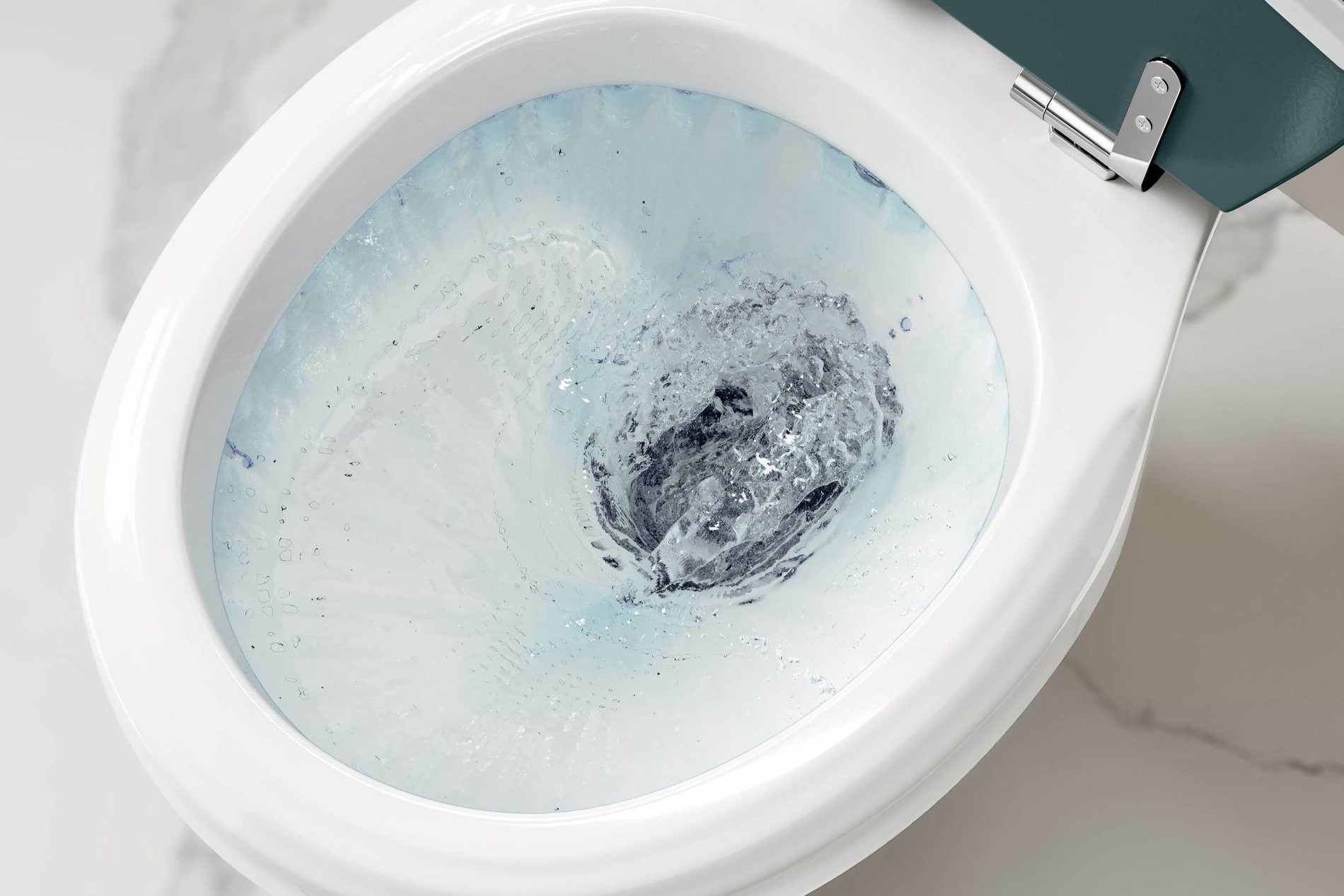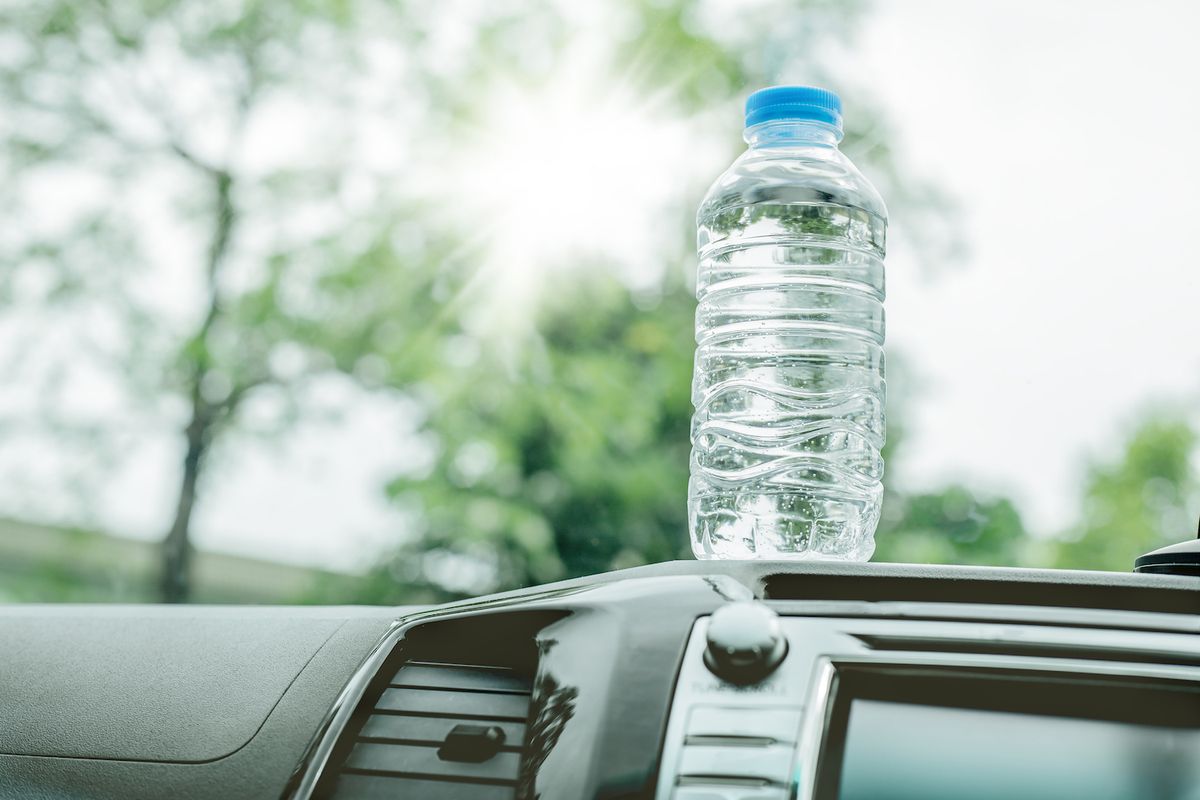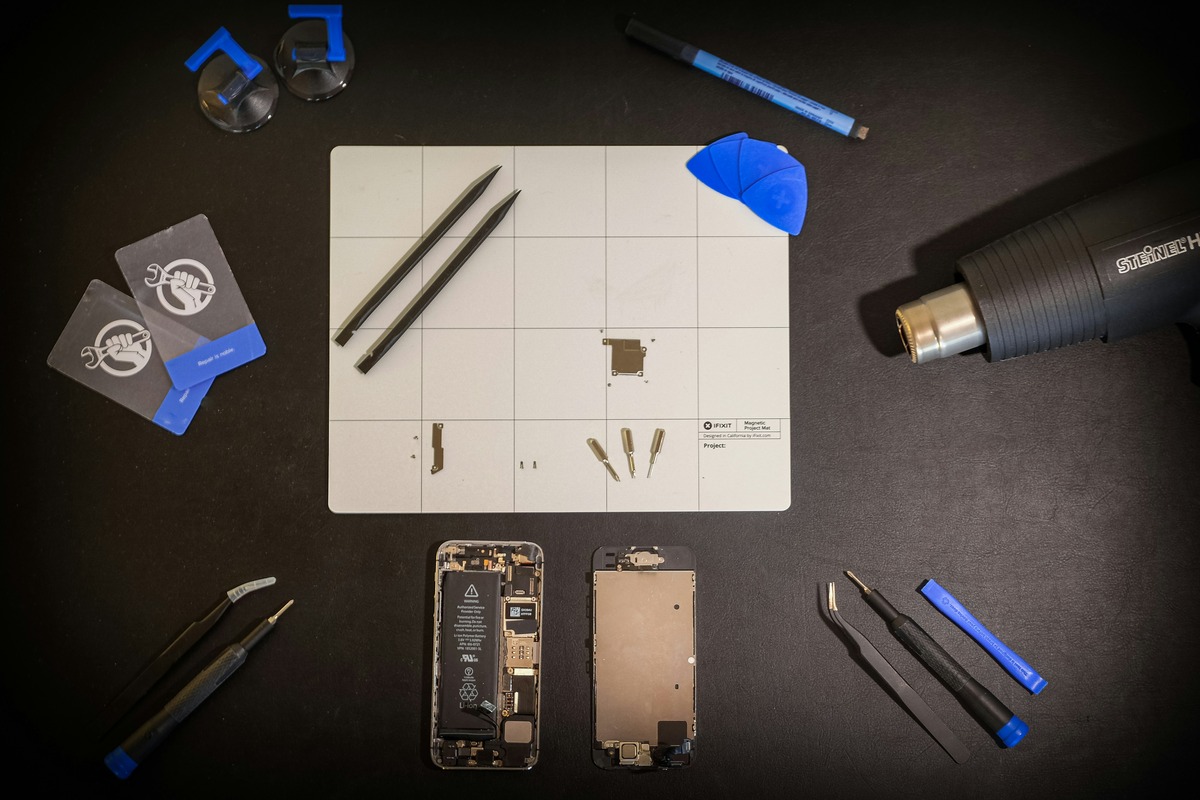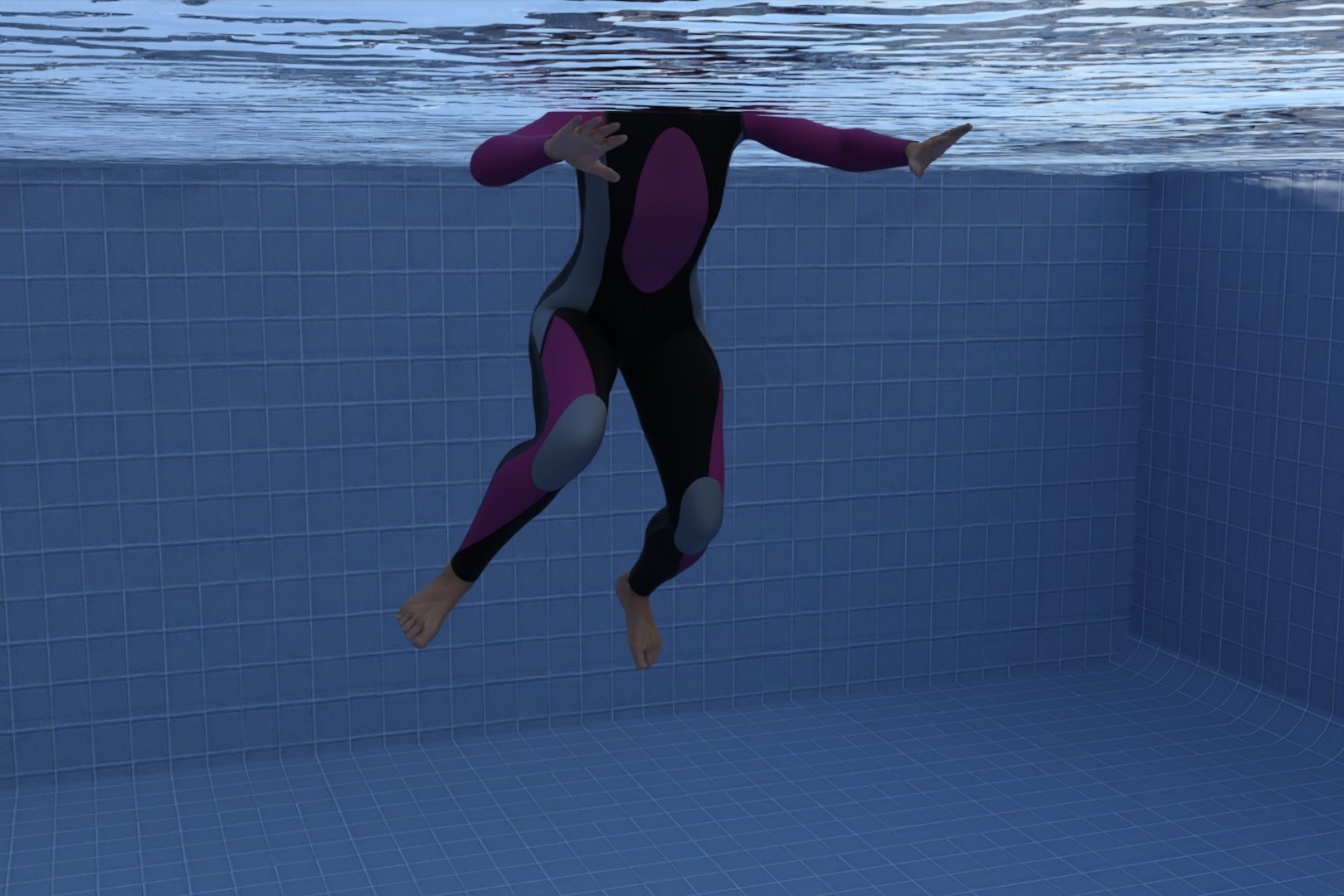

Sports
How To Tread Water
Published: February 26, 2024
Learn the essential techniques and tips for treading water in this comprehensive guide. Improve your sports skills and stay afloat with our expert advice.
(Many of the links in this article redirect to a specific reviewed product. Your purchase of these products through affiliate links helps to generate commission for Noodls.com, at no extra cost. Learn more)
Table of Contents
Introduction
Treading water is a fundamental skill in swimming and a vital survival technique. It allows individuals to stay afloat and conserve energy while in the water. Whether you're a beginner learning to swim or an experienced swimmer looking to enhance your aquatic abilities, mastering the art of treading water is essential.
In this comprehensive guide, we will delve into the intricacies of treading water, exploring the techniques, tips, and safety precautions that will help you become proficient in this essential skill. Whether you're in a pool, lake, or ocean, the ability to tread water effectively can make a significant difference in your confidence and safety in the water.
Treading water is not only a practical skill but also a great form of exercise. It engages various muscle groups, including the legs, arms, and core, making it an excellent full-body workout. Additionally, it improves cardiovascular endurance and strengthens the muscles used for swimming strokes.
By understanding the mechanics of treading water and honing your technique, you can build confidence in the water and enjoy a greater sense of security during aquatic activities. Whether you're a recreational swimmer, a water sports enthusiast, or simply someone who wants to feel more comfortable in the water, mastering the art of treading water is a valuable endeavor.
In the following sections, we will explore the basics of treading water, including the foundational principles and body positioning. We will then delve into various techniques that can be employed to improve your treading water skills. Additionally, we will provide valuable tips and safety precautions to ensure that you can tread water with confidence and peace of mind.
So, let's dive in and explore the world of treading water, unlocking the secrets to staying afloat with ease and grace.
Read more: How To Draw Water
Understanding the Basics of Treading Water
Treading water is a fundamental skill that allows individuals to stay buoyant and maintain their position in the water without the support of solid ground or swimming strokes. At its core, treading water involves a combination of movements that enable the body to remain afloat while conserving energy. Understanding the foundational principles of treading water is essential for developing proficiency in this skill.
Body Positioning
The first key aspect of treading water is maintaining the right body positioning. To achieve this, the body should be kept in a vertical orientation, with the head above the water's surface. The arms and legs work in tandem to provide the necessary propulsion and stability. It's important to keep the movements smooth and controlled to minimize energy expenditure.
Buoyancy and Breathing
Buoyancy plays a crucial role in treading water. By controlling breathing and body positioning, individuals can achieve optimal buoyancy, allowing them to stay afloat with minimal effort. Proper breathing techniques are essential for conserving energy and maintaining a steady rhythm while treading water. By taking slow, deep breaths and exhaling gradually, swimmers can regulate their buoyancy and stay relaxed in the water.
Leg Movements
The legs play a pivotal role in treading water, providing the primary source of propulsion and support. A common technique involves using a flutter kick, where the legs move in a continuous, rhythmic motion to keep the body afloat. The knees should be slightly bent, and the movements should be steady and controlled. By generating propulsion with the legs, individuals can offset the downward force of gravity and remain buoyant.
Read more: How To Clean Refrigerator Water Dispenser
Arm Movements
While the legs provide propulsion, the arms contribute to stability and balance during treading water. The arms can be used in various ways, such as making circular motions or sculling movements to help maintain the body's position. By coordinating the movements of the arms and legs, swimmers can achieve a harmonious rhythm that allows them to stay afloat with ease.
Core Engagement
Engaging the core muscles is essential for maintaining stability and balance while treading water. A strong core provides the foundation for efficient leg and arm movements, allowing individuals to conserve energy and stay buoyant for extended periods. By keeping the abdominal muscles engaged and the body aligned, swimmers can achieve greater control and endurance while treading water.
Understanding these fundamental aspects of treading water lays the groundwork for developing proficiency in this essential skill. By mastering body positioning, buoyancy, breathing techniques, and coordinated movements, individuals can enhance their confidence and safety in the water, making treading water a valuable asset in any aquatic setting.
Techniques for Treading Water
Mastering the art of treading water involves employing various techniques that optimize buoyancy, propulsion, and stability. By honing these techniques, swimmers can enhance their ability to stay afloat with minimal effort, allowing for extended periods of time in the water. Here are some effective techniques for treading water:
Scissor Kick
The scissor kick technique involves alternating the movement of the legs in a scissor-like motion. To execute this technique, extend one leg forward and the other backward, then quickly switch their positions. This continuous, alternating motion generates propulsion and helps maintain buoyancy. The scissor kick is particularly effective for conserving energy while treading water, making it a valuable technique for prolonged periods in the water.
Eggbeater Kick
The eggbeater kick is a powerful technique commonly used in water polo and synchronized swimming. It involves a circular motion of the legs, similar to the action of an eggbeater. By rotating the legs in opposite directions, swimmers can create a steady upward force that counteracts the downward pull of gravity, allowing for sustained buoyancy. The eggbeater kick provides excellent stability and control, making it a preferred technique for treading water in deep or turbulent conditions.
Arm Treading
In addition to leg movements, arm treading can significantly contribute to maintaining buoyancy and stability. This technique involves making circular or sculling motions with the arms to support the body's position in the water. By coordinating the movements of the arms with the leg actions, swimmers can achieve a balanced and efficient treading water technique. Arm treading is particularly useful for conserving energy and maintaining a steady rhythm while treading water.
Compact Treading
Compact treading is a technique that emphasizes minimizing unnecessary movements to conserve energy. By keeping the body in a compact position and making small, controlled movements with the arms and legs, swimmers can achieve efficient treading water with minimal exertion. This technique is especially beneficial for long-duration treading, as it allows individuals to sustain their energy levels and remain buoyant for extended periods.
Tread and Glide
Tread and glide is a technique that combines short bursts of vigorous treading with brief moments of gliding. Swimmers alternate between intense leg movements to stay afloat and brief periods of gliding to conserve energy. This technique is effective for maintaining buoyancy while minimizing fatigue, making it a valuable skill for treading water over extended distances or in challenging conditions.
By incorporating these techniques into their treading water repertoire, swimmers can enhance their proficiency and endurance in the water. Each technique offers unique benefits, from energy conservation to enhanced stability, providing individuals with a diverse set of tools for mastering the art of treading water. With practice and dedication, these techniques can elevate one's confidence and skill in treading water, making aquatic activities more enjoyable and safe.
Read more: How To Increase Water Pressure In Shower
Tips for Improving Your Treading Water Skills
Improving your treading water skills requires dedication, practice, and a focus on refining key aspects of your technique. Whether you're a novice swimmer or an experienced aquatic enthusiast, these tips can help elevate your proficiency in treading water, enhancing your confidence and safety in the water.
1. Practice Consistently
Consistent practice is essential for improving your treading water skills. Set aside dedicated time during each swimming session to focus specifically on treading water. By incorporating regular practice into your routine, you can refine your technique, build endurance, and develop a greater sense of comfort and control in the water.
2. Focus on Relaxation
Staying relaxed is crucial for efficient treading water. Tension in the body can lead to increased energy expenditure and reduced buoyancy. Focus on maintaining a calm and relaxed demeanor while treading water, and practice controlled breathing to promote relaxation. By staying composed, you can conserve energy and prolong your ability to stay afloat.
3. Build Leg Strength
Strong leg muscles are instrumental in treading water effectively. Incorporate leg-strengthening exercises, such as flutter kicks and leg presses, into your fitness regimen to enhance the power and endurance of your leg movements. Building leg strength will improve your ability to generate propulsion and maintain buoyancy while treading water.
Read more: How To Light Pilot Light On Water Heater
4. Enhance Core Stability
A stable core provides the foundation for efficient treading water. Engage in core-strengthening exercises, such as planks and Russian twists, to fortify the muscles that support your body's position in the water. A strong core will improve your balance, control, and overall endurance while treading water.
5. Experiment with Different Techniques
Explore various treading water techniques, such as the scissor kick, eggbeater kick, and arm treading, to discover which methods work best for you. Experimenting with different techniques allows you to identify the most effective approach for your body type and swimming style. By diversifying your skill set, you can adapt to different water conditions and optimize your treading water performance.
6. Seek Professional Guidance
Consider seeking guidance from a certified swimming instructor or coach to receive personalized feedback on your treading water technique. Professional instruction can provide valuable insights and tailored recommendations for improving your skills. A qualified instructor can offer guidance on body positioning, movement coordination, and breathing techniques, helping you refine your treading water abilities.
7. Stay Hydrated and Energized
Proper hydration and nutrition play a significant role in your ability to tread water effectively. Stay well-hydrated and maintain a balanced diet to support your overall physical endurance and stamina. Adequate hydration and nutrition contribute to sustained energy levels, allowing you to engage in longer and more productive treading water sessions.
By incorporating these tips into your training regimen and approaching treading water with dedication and enthusiasm, you can elevate your skills and confidence in the water. With consistent practice, a focus on relaxation, and a commitment to physical conditioning, you can enhance your treading water abilities and enjoy a greater sense of mastery in aquatic environments.
Read more: How To Turn Hot Water Heater Up
Safety Precautions for Treading Water
When engaging in treading water activities, prioritizing safety is paramount to ensure a secure and enjoyable experience in the water. Implementing the following safety precautions can significantly mitigate risks and enhance the overall safety of treading water sessions.
1. Supervision and Buddy System
Never engage in treading water activities alone, especially in open water environments. Always swim with a companion or under the supervision of a lifeguard. The buddy system provides an additional layer of safety, as it allows for mutual assistance in the event of fatigue, cramps, or unexpected challenges while treading water.
2. Water Depth and Conditions
Before treading water, assess the depth and conditions of the water body. Ensure that the water is of a suitable depth for treading water activities, especially if you are a novice swimmer. Additionally, be mindful of water conditions such as currents, waves, and underwater obstacles, and avoid treading water in hazardous or turbulent environments.
3. Personal Flotation Devices
In situations where treading water may be prolonged or in open water scenarios, consider wearing a personal flotation device (PFD) for added safety. PFDs provide buoyancy and can offer support in the event of fatigue or unexpected challenges. It is important to select a PFD that is appropriate for treading water activities and fits securely.
4. Acclimatization and Endurance
Gradually acclimate to treading water activities, especially if you are new to the skill. Start with shorter sessions and gradually increase the duration as your endurance improves. Overexertion can lead to fatigue and compromised safety, so it is essential to build endurance gradually and listen to your body's signals.
5. Weather Awareness
Stay informed about weather conditions before treading water, particularly in open water settings. Avoid treading water during inclement weather, as strong winds, lightning, or rough waters can pose significant risks. Be mindful of weather forecasts and exercise caution when considering treading water activities in outdoor environments.
6. Hydration and Sun Protection
Maintain proper hydration before and after treading water sessions to support your overall well-being and endurance. Additionally, apply sunscreen and wear appropriate sun protection to safeguard against sunburn and prolonged sun exposure, especially in outdoor aquatic settings.
7. Emergency Preparedness
Familiarize yourself with emergency protocols and rescue techniques, including how to signal for help and provide assistance to others in distress. Being prepared for unforeseen circumstances can bolster your confidence and readiness to address potential safety concerns while treading water.
By adhering to these safety precautions, individuals can minimize risks and cultivate a secure environment for treading water activities. Prioritizing safety not only enhances the overall experience but also fosters a sense of confidence and preparedness in aquatic environments.
Read more: How To Make A Water Elevator In Minecraft
Conclusion
In conclusion, mastering the art of treading water is a valuable endeavor for individuals of all swimming abilities. This essential skill not only enhances safety and confidence in aquatic environments but also serves as a form of full-body exercise. By understanding the foundational principles of treading water, including body positioning, buoyancy, and coordinated movements, individuals can develop proficiency in staying afloat with ease and grace.
The techniques and tips outlined in this guide provide a comprehensive framework for improving treading water skills. From the scissor kick and eggbeater kick to the importance of relaxation and core stability, each aspect contributes to a well-rounded approach to treading water. By incorporating these techniques into regular practice and focusing on physical conditioning, individuals can elevate their treading water abilities and enjoy a greater sense of mastery in the water.
Furthermore, prioritizing safety precautions is essential for creating a secure environment for treading water activities. The emphasis on supervision, water depth assessment, personal flotation devices, and weather awareness underscores the significance of mitigating risks and ensuring a safe experience in aquatic settings. By adhering to these precautions, individuals can cultivate a heightened awareness of potential safety concerns and approach treading water activities with confidence and preparedness.
Ultimately, the journey to mastering treading water is one of continuous learning and refinement. Whether it's through consistent practice, seeking professional guidance, or acclimating to different treading water techniques, individuals can progressively enhance their skills and endurance in the water. By embracing the principles of treading water and integrating them into their swimming repertoire, individuals can foster a deeper connection with aquatic environments and experience the joy of treading water with proficiency and confidence.
In essence, treading water is not just a skill; it's a gateway to greater aquatic enjoyment, improved safety, and enhanced physical well-being. By embracing the principles, techniques, and safety measures outlined in this guide, individuals can embark on a journey of aquatic mastery, unlocking the secrets to staying afloat with poise and assurance.
